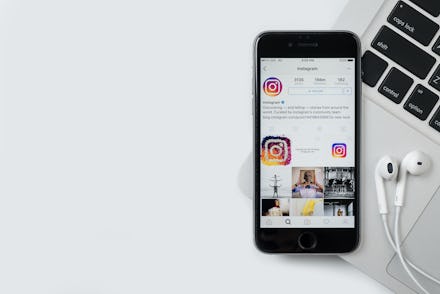Instagram, hungry for more users, is asking people to create multiple accounts

Amid Instagram's sprint to reach the milestone of 1 billion monthly active users, the company is now encouraging single users to create multiple accounts.
These secondary accounts on Instagram are nothing new. Teens say that having a finsta, or "fake Instagram" — a separate, private Instagram in addition to a more public one — is critical to their social lives, and countless users have separate interest-based or business accounts.
In February 2016, the company rolled out a feature in the app that made it easy to flip back and forth between accounts. Also, it's now easy to share content from multiple accounts to a single Facebook page.
On Thursday night, Twitter user Pat Murray spotted an in-app notification suggesting he create a secondary account:
Why did Instagram just endorse the finsta?
Maybe it's a coincidence, but it appears the company is attempting to capitalize on multiple accounts in order to boost user growth.
In April, the company announced that it had surpassed 700 million monthly active users, up from 600 million in December, its fastest rate of growth yet.
Facebook has been attempting to aggressively compete with Snapchat, which is known as a service that better fosters more personal and intimate connections than on Instagram. But a "finsta" lets users get real and let loose, and many young adults said they've adopted it as a fun alternative to the curated, professional vibe of their "rinsta," or "real Instagram."
Currently, users spend an average of 15 minutes per day on Instagram, compared to around 30 minutes per day on Snapchat. Instagram has yet to prove itself as a place where users want to come and hang out with close friends. Like many users, I personally go on to post a photo or two from my camera roll, scan some recent pics, then hop back out to chat with people I want to talk to. Snapchat, meanwhile, offers a rich messaging experience that in my opinion feels light-years ahead of Instagram Direct.
This is likely one reason why Instagram rolled out Instagram Stories, and near-exact clone of Snapchat Stories, in August. One key difference: Instagram users were automatically subscribed to all stories from people they followed, leaving some sorting through thousands of stories a day. Snapchat, on the other hand, doesn't sync with other social networks and never mass-follows accounts on a user's behalf.
Fostering more private and intimate connections between people in the form of these duplicate private accounts could allow for more personal and natural communication on Instagram — and lead to increased time spent on the app. Embracing the finsta is a strategic bet for Instagram, and it might pay off.